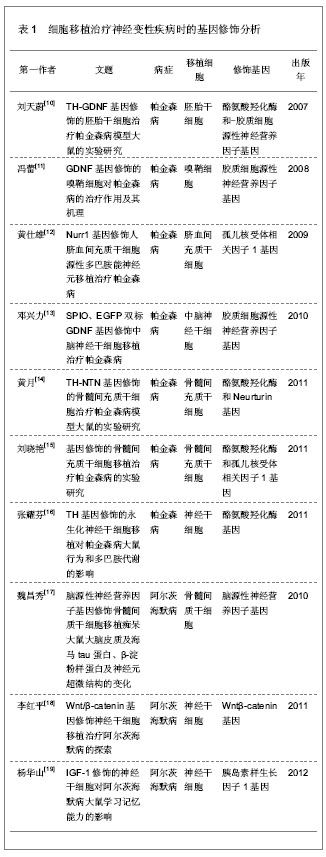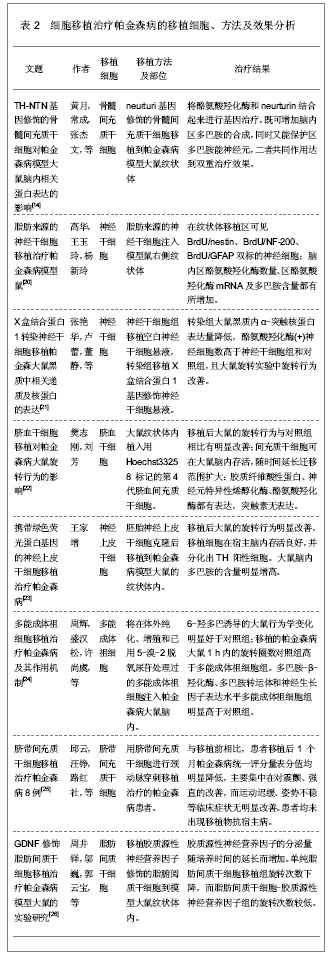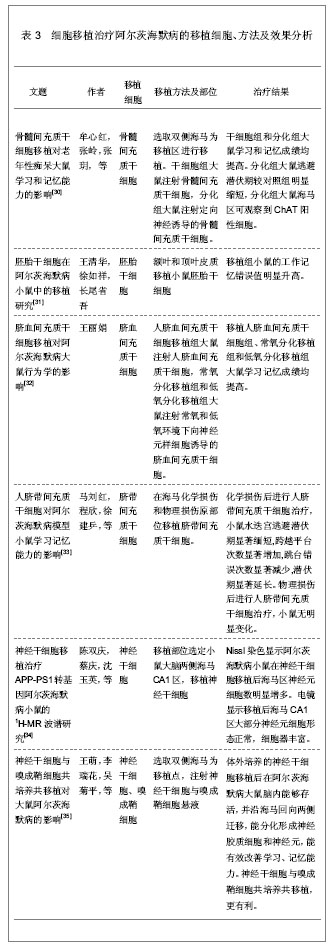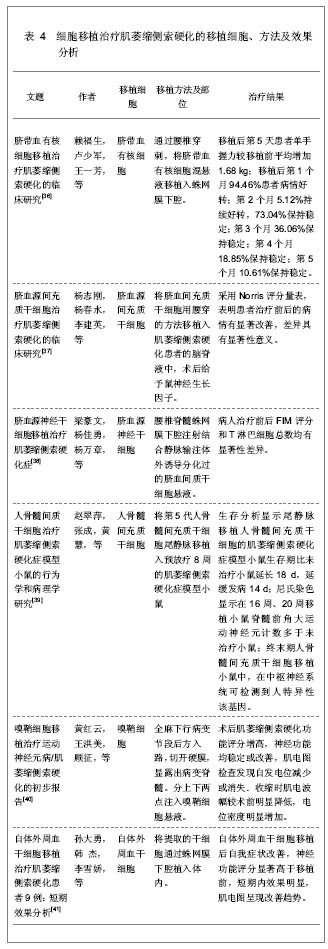| [1] Hochgräfe K, Mandelkow EM. Making the Brain Glow: In Vivo Bioluminescence Imaging to Study Neurodegeneration. Mol Neurobiol. 2012.[2] Goolsby J, Marty MC, Heletz D, et al. Hematopoietic progenitors express neural genes. Proc Natl Acad Sci U S A. 2003;100(25):14926-14931.[3] Jang YK, Park JJ, Lee MC, et al. Retinoic acid-mediated induction of neurons and glial cells from human umbilical cord-derived hematopoietic stem cells. J Neurosci Res. 2004;75(4):573-584.[4] Ende N, Chen R, Ende-Harris D. Human umbilical cord blood cells ameliorate Alzheimer's disease in transgenic mice. J Med. 2001;32(3-4):241-247.[5] Larijani B, Esfahani EN, Amini P, et al. Stem cell therapy in treatment of different diseases. Acta Med Iran. 2012;50(2): 79-96.[6] Shamash S, Reichert F, Rotshenker S. The cytokine network of Wallerian degeneration: tumor necrosis factor-alpha, interleukin-1alpha, and interleukin-1beta. J Neurosci. 2002; 22(8):3052-3060.[7] Kim JH, Auerbach JM, Rodríguez-Gómez JA, et al. Dopamine neurons derived from embryonic stem cells function in an animal model of Parkinson's disease. Nature. 2002;418 (6893):50-56.[8] Chen X, Liu W, Guoyuan Y, et al. Protective effects of intracerebral adenoviral-mediated GDNF gene transfer in a rat model of Parkinson's disease. Parkinsonism Relat Disord. 2003;10(1):1-7.[9] McGrath J, Lintz E, Hoffer BJ, et al. Adeno-associated viral delivery of GDNF promotes recovery of dopaminergic phenotype following a unilateral 6-hydroxydopamine lesion. Cell Transplant. 2002;11(3):215-227.[10] 刘天蔚.TH-GDNF基因修饰的胚胎干细胞治疗帕金森病模型大鼠的实验研究[D].山东:青岛大学,2007.[11] 冯蕾.GDNF基因修饰的嗅鞘细胞对帕金森病的治疗作用及其机理[D].山东:山东大学,2008.[12] 黄仕雄.Nurr1基因修饰人脐血间充质干细胞源性多巴胺能神经元移植治疗帕金森病[J]中山大学学报(医学科学版),2009, 30(05):522-526.[13] 邓兴力,王应莉,杨智勇,等.SPIO、EGFP双标GDNF基因修饰中脑神经干细胞移植治疗帕金森病[J].中风与神经疾病杂志,2010, 27(02):109-113.[14] 黄月.TH-NTN基因修饰的骨髓间充质干细胞治疗帕金森病模型大鼠的实验研究[D].河南:郑州大学,2011.[15] 刘晓艳,康慧聪,胡琦,等.基因修饰的骨髓间充质干细胞移植治疗帕金森病的实验研究[J]. 华中科技大学学报(医学版),2011, 40(04):396-399.[16] 张耀芬,李振洲,郑静晨,等.TH基因修饰的永生化神经干细胞移植对帕金森病大鼠行为和多巴胺代谢的影响[J].武警医学,2011, 22(01):34-37,42.[17] 魏昌秀,代宏,陈松林.脑源性神经营养因子基因修饰骨髓间质干细胞移植痴呆大鼠大脑皮质及海马tau蛋白、β-淀粉样蛋白及神经元超微结构的变化[J].中国组织工程研究与临床康复, 2010, 14(45):8421-8425.[18] 李红平,康朝胜,余资江,等.Wnt/β-catenin基因修饰神经干细胞移植治疗阿尔茨海默病的探索[J].四川解剖学杂志,2011,19(04): 42-45.[19] 杨华山,王金国,蒋莉.IGF-1修饰的神经干细胞对阿尔茨海默病大鼠学习记忆能力的影响[J].中国老年学杂志,2012,32(20): 4465-4467.[20] 高华,王玉玲,杨新玲.脂肪来源的神经干细胞移植治疗帕金森病模型鼠[J].中华实验外科杂志,2012,29(03):462-465.[21] 张艳华,卢蕾,董静,等.X盒结合蛋白1转染神经干细胞移植帕金森大鼠黑质中相关递质及核蛋白的表达[J].中国组织工程研究, 2012,16(45):8510-8513.[22] 樊志刚,刘芳.脐血干细胞移植对帕金森病大鼠旋转行为的影响[J].中国组织工程研究,2012,16(14):2567-2570.[23] 王家增.携带绿色荧光蛋白基因的神经上皮干细胞移植治疗帕金森病[J].中国组织工程研究,2012,16(06):1080-1084.[24] 周辉,盛汉松,许尚虞,等.多能成体祖细胞移植治疗帕金森病及其作用机制[J].中华实验外科杂志,2011,28(11):1935-1938.[25] 邱云,汪铮,路红社,等.脐带间充质干细胞移植治疗帕金森病8例[J].中国组织工程研究与临床康复,2011,15(36): 6833-6836.[26] 周井铎,邬巍,郭云宝,等.GDNF修饰脂肪间质干细胞移植治疗帕金森病模型大鼠的实验研究[J].中国老年学杂志,2011, 31(12): 2269-2271.[27] Auld DS, Kornecook TJ, Bastianetto S, et al. Alzheimer's disease and the basal forebrain cholinergic system: relations to beta-amyloid peptides, cognition, and treatment strategies. Prog Neurobiol. 2002;68(3):209-245.[28] German DC, Yazdani U, Speciale SG, et al. Cholinergic neuropathology in a mouse model of Alzheimer's disease. J Comp Neurol. 2003;462(4):371-381.[29] Limke TL, Rao MS. Neural stem cells in aging and disease. Cell Mol Med. 2002;6(4):475-496.[30] 牟心红,张岭,张玥,等.骨髓间充质干细胞移植对老年性痴呆大鼠学习和记忆能力的影响[J].武警后勤学院学报(医学版),2012, 21 (07):499-502,封2.[31] 王清华,徐如祥,长尾省吾.胚胎干细胞在阿尔茨海默病小鼠中的移植研究[J].中华神经医学杂志,2011,10(05):464-466.[32] 王丽娟.脐血间充质干细胞移植对阿尔茨海默病大鼠行为学的影响[J].中国老年学杂志,2012,32(21):4687-4689.[33] 马刘红,程欣,徐建乒,等.人脐带间充质干细胞对阿尔茨海默病模型小鼠学习记忆能力的影响[J].广东医学,2012,33(10): 1366-1369.[34] 陈双庆,蔡庆,沈玉英,等.神经干细胞移植治疗APP-PS1转基因阿尔茨海默病小鼠的1H-MR波谱研究[J].中华放射学杂志,2012, 46(02):164-169.[35] 王萌,李瑞花,吴菊平,等.神经干细胞与嗅成鞘细胞共培养共移植对大鼠阿尔茨海默病的影响[J].山西医药杂志(下半月版),2012, 41(01):23-26[36] 赖福生,卢少军,王一芳,等.脐带血有核细胞移植治疗肌萎缩侧索硬化的临床研究[J].东南国防医药,2010,12(06):515-518.[37] 杨志刚,杨春水,李建英,等.脐血源间充质干细胞治疗肌萎缩侧索硬化的临床研究[J].中外医疗,2012,31(21):68-69.[38] 梁豪文,杨佳勇,杨万章,等.脐血源神经干细胞移植治疗肌萎缩侧索硬化症[J].中西医结合心脑血管病杂志,2007,5(06):493-495.[39] 赵翠萍,张成,黄慧,等.人骨髓间质干细胞治疗肌萎缩侧索硬化症模型小鼠的行为学和病理学研究[J].中国病理生理杂志,2010, 26(01):101-106.[40] 黄红云,王洪美,顾征,等.嗅鞘细胞移植治疗运动神经元病/肌萎缩侧索硬化的初步报告[J]. 中国临床康复,2004,8(13): 2440-2441.[41] 孙大勇,韩杰,李雪娇,等.自体外周血干细胞移植治疗肌萎缩侧索硬化患者9例:短期效果分析[J].中国组织工程研究,2012,16(14): 2645-2647[42] 金善,邵福源.干细胞移植治疗神经变性疾病[J].中华神经医学杂志,2007,6(01):89-92.[43] Stone JG, Siedlak SL, Tabaton M, et al. The cell cycle regulator phosphorylated retinoblastoma protein is associated with tau pathology in several tauopathies. J Neuropathol Exp Neurol. 2011;70(7):578-587.[44] Lenzken SC, Romeo V, Zolezzi F, et al. Mutant SOD1 and mitochondrial damage alter expression and splicing of genes controlling neuritogenesis in models of neurodegeneration. Hum Mutat. 2011;32(2):168-182.[45] Dunkel P, Chai CL, Sperlágh B, et al. Clinical utility of neuroprotective agents in neurodegenerative diseases: current status of drug development for Alzheimer's, Parkinson's and Huntington's diseases, and amyotrophic lateral sclerosis. Expert Opin Investig Drugs. 2012;21(9): 1267-1308. [46] Kanouchi T, Ohkubo T, Yokota T. Can regional spreading of amyotrophic lateral sclerosis motor symptoms be explained by prion-like propagation? J Neurol Neurosurg Psychiatry. 2012;83(7):739-745.[47] Yamamoto-Watanabe Y, Watanabe M, Jackson M, et al. Quantification of cystatin C in cerebrospinal fluid from various neurological disorders and correlation with G73A polymorphism in CST3. Brain Res. 2010;1361:140-145.[48] Ambegaokar SS, Roy B, Jackson GR. Neurodegenerative models in Drosophila: polyglutamine disorders, Parkinson disease, and amyotrophic lateral sclerosis. Neurobiol Dis. 2010;40(1):29-39. |



